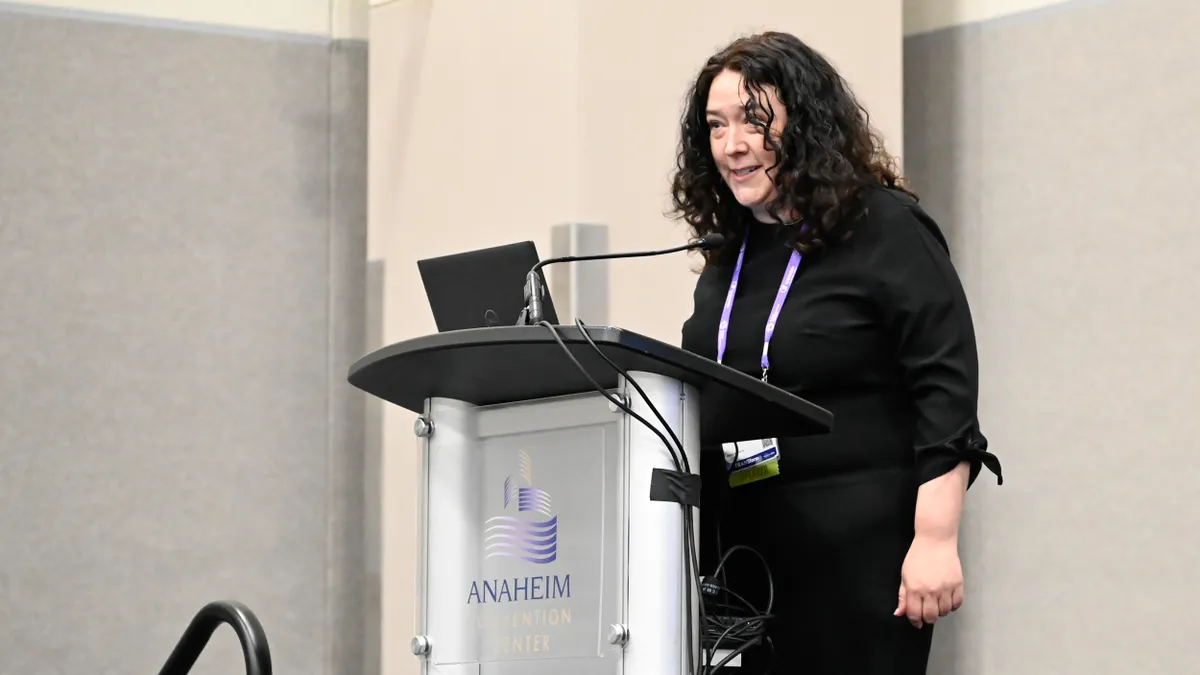More than $50 billion in state and local transit funding measures will be on the Nov. 5 ballot across the U.S., said Jessica Grennan, executive director of the American Public Transportation Association’s Center for Transportation Excellence, speaking on a panel at an APTA conference Oct. 1.
The track record for transit-funding measures is strong. In the last five years, more than 86% have passed, and 26 out of 27 measures have already passed this year in earlier elections, Grennan said. “Ballot measures are an important part of the transit funding landscape in this country.” According to APTA’s Center for Transportation Excellence, 19 transit measures are on the Nov. 5, 2024, ballot.
But Grennan warned that such measures are getting more expensive to put on the ballot, where a minimum number of registered-voter signatures are required, and to communicate their value to voters. She expects a high voter turnout this November, which means advocates need to reach out to more people.
“None of our ballot measures operate alone,” she said, noting that competing measures and campaign spending for the presidential candidates can influence how voters respond. “We have to find ways for transit to break through the noise,” she added.
The message that goes out to voters is essential for success, explained Tony Cani, a public affairs strategist and founder of Slingshot Campaigns, at the conference. Telling voters that a transit measure is going to create jobs is a non-starter.
“We did a ton of research and we found that voters just don't believe that,” he said. What does resonate with voters is the promise of lower traffic congestion, time savings and safety. “When it comes to the message, we're focusing on the fact that people have more time to spend with their families” Cani said.
Two panelists spoke of their efforts to get transit ballot measures passed in their communities. In 2018, Nashville, Tennessee sought to expand its transit system with an ambitious $5.4 billion plan centered on a new light rail line. Voters defeated the measure by a 64% to 36% margin.
But a new mayor was elected in Nashville last year: Freddie O’Connell, a former chair of the Metro Nashville Transit Authority.
“He ran [for mayor] on transit,” said Amanda Vandegrift, deputy CEO of finance and administration for WeGo Public Transit, the new brand name for the transit agency. O’Connell’s “Choose How You Move” program, which will be on the Nov. 5 ballot for Davidson County voters, emphasizes more pedestrian infrastructure, 24-hour public transit service, smart traffic signals to reduce delays and street safety improvements. “This is really focused on the basics,” Vandegrift said.
The referendum on November’s ballot is a roughly $3 billion plan financed by a half-cent sales tax that will sunset when it’s no longer needed, plus federal grants and fare box revenues. Observers see far less opposition to the current measure than in 2018.
The Central Ohio Transit Authority is asking voters to approve a 0.75% sales tax to fund an $8 billion plan to build three bus rapid transit corridors, invest in more than 500 miles of sidewalks, bikeways and trails by 2050 and increase transit service by 45%. “It's really about supporting the increased housing we need as well as the workforce,” said Monica Tellez-Fowler, president and CEO at COTA.














